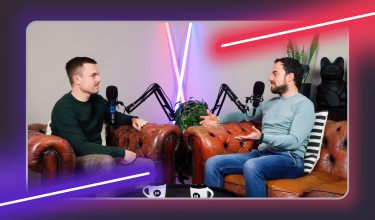
#ux #uxdesign #concept
24. März 2022 |
- min Lesezeit
Ensuring a consistent design across various touchpoints in today’s omnichannel environment can be quite a challenge for UX designers. Thus, it’s no surprise that Design Systems, a dynamic framework to standardize and scale design, became a hot topic in today’s digital business world.
By introducing a Design System, a company can design websites, apps and platforms with a consistent visual identity, and scale their design across different platforms. This gives the user an intuitive experience with the respective medium and brand.
I have been working with Design Systems for many years and have experienced that the understanding of a Design System varies a lot. I can observe this from client requests talking about Design Systems when they want to set up a first pattern library for their product, as well as when they want to set up a multi brand, multi team design project.
A similar spread can be experienced when searching for a definition of the term. For me, it ended up in a huge variety of definitions, all circulating around one core but still very flexible and therefore indefinite on what a Design System is and what it is made of. Additionally, the term “system” makes the whole thing feel bigger than it needs to be.
There are two definitions which, from my point of view, hit the nail on the head, as they refer to the dynamic framework character and the relations of the individual patterns of a Design System. This emphasizes the benefits of a Design System being a single source of truth, combining rules with reusable patterns, offering an approach to standardize and scale design across different touchpoints. That is where the good old Brand Bible PDF can not compete anymore.
“
I tend to define a design system as the official story of how your organization designs and builds digital products. There are a lot of ingredients involved in telling that story.
“
“
The generally-accepted definition of a design system is that it’s the outer circle – it encompasses pattern libraries, style guides, and any other artefacts. But there’s something more. Just because you have a collection of design patterns doesn’t mean you have a design system. A system is a framework. It’s a rulebook. It’s what tells you how those patterns work together.
“
When companies want to build products, they need to serve multiple touchpoints, different devices and use cases. Companies of all sizes have to cope with the fact that their designs are not scaling as quickly as their businesses do, and products get out of sync. To meet these diverse expectations, companies and their visual appearance need to evolve and adapt constantly. The demand to serve products with a consistent UX and UI increases immensely. That is usually where Design Systems come into place, in order to build user-centered products quickly, effectively and cost sensitive, with a high quality and flexible design.
The challenge in design is more than ever to master design complexity. And the solution to tackle this complexity is a system approach.
Whenever a design gets too complex, hindering designers in taking decisions fast, it helps to systemize the design, getting rid of unwanted complexities.
Although systems are often seen as big and complex, you can start a system very small. Already by putting together a small set of colour styles, giving them a name and therefore setting up their purpose and usage is a small system that is helping to create designs more effectively. So, yes: a Pattern Library, even one set of patterns, can be seen as a Design System.
The perspective of design complexity is what leads us at DPM when we propose to use a Design System or not. At first, we identify the level of design maturity and complexity of the company’s design. Although a fully featured Design System can be a big project in itself, the whole task of design systematization and complexity reduction can start very small. So we always match the necessary system size to the client’s current situation.
It is therefore a lean approach, starting small, building something, seeing if it works, and learning from it. Since we approach a Design System as a product on its own, we can also plan and execute this product as any other digital product.
For our clients we are doing hands-on help on creating design system elements, like components for pattern libraries as well as consulting on implementing the design system with all its processes in the organisation (Design Operations), making the most out of it.
Check out the latest episode of Digital Log by DPM featuring Kay Kleinschmidt, Lead UX Designer at DPM, talking about the following topics:
I am Kay, UX Lead Designer at DieProduktMacher. My daily work is focussed on the development and consultancy of Design Systems for our clients. Furthermore, I am coaching our team members and designers to better understand and execute working on and with Design Systems.
Connect with Kay on Linkedin: https://www.linkedin.com/in/kay-kleinschmidt-21871060/
